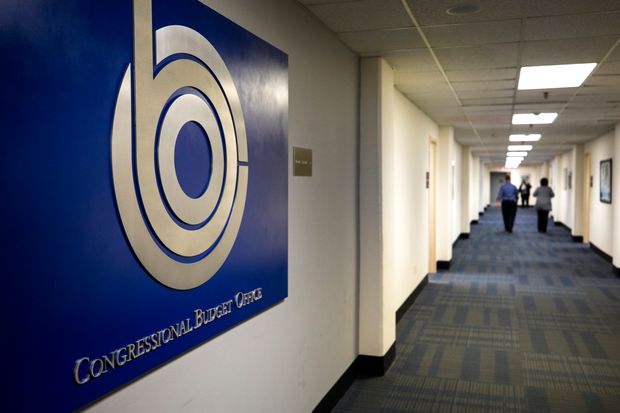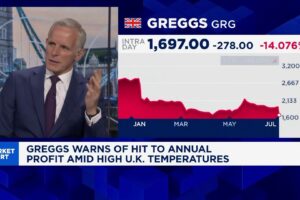
A sign identifies the offices of the nonpartisan Congressional Budget Office in the Ford House Office Building in Washington, DC. EPA/JIM LO SCALZO Published Credit: jim lo scalzo/European Pressphoto Agency
The first round of bills passed by Congress this year to combat the coronavirus pandemic, including the CARES Act and the extension of a small business forgivable loan program, will boost U.S. economic growth by 4.7% , the Congressional Budget Office said Friday.
In an analysis released Friday, the non-partisan federal agency that provides financial and economic advice to Congress said the first four bills passed with near-unanimous support will also add about 3.1% to the size of gross domestic product in 2021. The cost for this fiscal stimulus: almost $2.9 trillion over two years, CBO said.
The report comes as Congress and the White House are struggling to agree on another coronavirus aid deal before lawmakers hit the road in October for the fall election campaigns. A large gap between Republican and Democratic offers and increasing confidence the economy is improving have left prospects for a deal uncertain, at best.
Read more: One way to end coronavirus aid standoff? Add parts of a deal to stopgap funding bill
While the short-term impacts of the stimulus were to goose the economy, the CBO said the additional debt racked up to pay for the laws would be a drag in the long run. However, in the near-term, CBO said it saw little evidence the federal borrowing was making it harder for the private sector to get loans.
CBO looked at four bills passed in March and April to deal with the virus and the later societal lockdown that threw the economy into a tailspin. The biggest bills were the CARES Act, enacted into law in late March, and a measure to extend additional borrowing authority for the Paycheck Protection Program, which provided loans to small businesses that could be forgiven if they did not lay off their employees.
CBO also looked at the effectiveness of the types of aid provided. Major portions of the CARES Act included the PPP, the $600-a-week federal add-on payment on top of state unemployment benefits, $1,200 direct payments to households and payments to state and local governments.
Of those, the CBO said the highest return was from the state and local government payments, which it said boosted GDP by 89 cents for every dollar spent on them from 2020 to 2023. The enhanced unemployment benefits saw the second-biggest rate of return, at 68 cents per dollar, CBO said.
The checks sent to households boosted the economy by 61 cents per dollar, CBO said, and the PPP, which has wide political support in both parties, was the least effective, at 37 cents added to GDP per dollar spent.
The CBO said the PPP helped keep many workers employed, though, estimating it saved about 106 million job-weeks, or average hours worked by full- and part-time workers in typical week. About 70% of those job-weeks saved were in the second quarter of 2020.
The debt incurred to pay for these programs will be a drag on the economy over the long-run, though, the CBO warned. It said GDP would be about 0.4% smaller in 2030 because of the higher debt.
But in the short run, CBO said it doesn’t see private investment being more difficult because of the increased borrowing by the government.
“However, under current conditions, the crowding out of private investment by increased federal deficits will be minimal in the short term”, the CBO expects. That is mainly because the economy is expected to operate well below its potential level for several years, resulting in the Federal Reserve keeping interest rates very low through the middle of the decade, the report said.
Read more: Fed makes its last stand in struggle to keep potent in age of low interest rates






